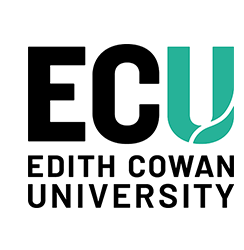Author Identifier (ORCID)
Muhammad Haziq: https://orcid.org/0009-0006-7406-8149
Quoc Viet Phung: https://orcid.org/0000-0002-6138-3944
Stefan Lachowicz: https://orcid.org/0000-0001-8262-2898
Daryoush Habibi: https://orcid.org/0000-0002-7662-6830
Iftekhar Ahmad: https://orcid.org/0000-0003-4441-9631
Abstract
The underwater acoustic channel poses a significant challenge among communication mediums due to its time-varying dynamics, long multipath propagation, and severe Doppler shifts. Ensuring reliable data transmission under these conditions demands advanced modulation techniques, sophisticated signal processing algorithms, and high energy consumption. Moreover, underwater communication nodes typically have limited battery reserves, making them difficult and costly to replace or recharge. Additionally, as underwater communication networks expand, the risk of security threats that could compromise the system has increased, necessitating robust security measures that add further computational overhead. This comprehensive survey reviews the state-of-the-art modulation techniques for underwater acoustic communication, concentrating on energy efficiency and security measures while also exploring how Artificial Intelligence enhances these modulation techniques. We first cover the background of various modulation methods, including single-carrier modulation, multicarrier modulation, spread spectrum, spatial modulation, and hybrid-carrier modulation, highlighting their advantages and limitations. Then, we discuss strategies for minimizing power consumption and extending the operational life of battery-powered underwater nodes. Next, the paper addresses potential security risks and examines solutions to counteract security threats and attacks in underwater environments. Furthermore, this survey explores the benefits of incorporating AI to enhance underwater acoustic communication by optimizing synchronization, channel estimation, equalization, and detection, as well as adapting transmission parameters to changing conditions. Finally, we conclude the survey by suggesting future research directions and emphasizing the potential impact of integrating AI-based secure and energy-efficient receivers.
Document Type
Journal Article
Date of Publication
1-1-2025
Publication Title
IEEE Access
Publisher
IEEE
School
School of Engineering
Funders
Jobs, Tourism, Science, and Innovation - Defense Science Center, Australia (G1007244)
Creative Commons License

This work is licensed under a Creative Commons Attribution 4.0 License.


Comments
Haziq, M., Phung, Q. V., Lachowicz, S., Habibi, D., & Ahmad, I. (2025). Modulation techniques for underwater acoustic communication: A comprehensive survey. IEEE Access, 13, 150715–150755. https://doi.org/10.1109/ACCESS.2025.3601799